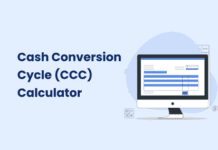In today’s dynamic marketplace, businesses rely heavily on their relationships with vendors to thrive and remain competitive. However, selecting the right vendors and managing these partnerships effectively can be a daunting task. That’s where vendor analysis comes into play.
Vendor analysis involves evaluating if a company would be a good partner to work with. It includes checking the financial stability, product or service standards, and past records of the company.
In this comprehensive guide, we’ll delve into the intricacies of vendor analysis, exploring its importance, methodologies, and practical tips for optimizing vendor relationships to drive sustainable business growth.
What is Vendor Analysis?
Vendor analysis involves evaluating the relationships a company has with its suppliers and vendors. It’s like taking a closer look at how well these partnerships are working and making any necessary changes.
Vendor analysis is crucial for businesses that rely on outside providers for materials or services, allowing companies to build strong partnerships that benefit everyone involved.
During vendor analysis, companies assess whether a vendor is a good fit to work with. They consider things like the vendor’s financial stability, the quality of what they provide, and their track record for delivering on time. This analysis is an important part of the procurement process. It helps companies spot potential risks and choose vendors who are likely to offer top-notch service. Plus, it can help with negotiating better deals with vendors. Overall, vendor analysis is essential for making smart choices about who to work with to keep a business running smoothly.
Why Should You Perform Vendor Analysis?
Vendor analysis is all about figuring out if a company is a good fit to supply what your business needs. Its main purpose is to spot any possible risks linked with working with a specific vendor and to decide if they can meet your company’s requirements.
During vendor analysis, you’ll look at things like the vendor’s financial stability, how well they make their products, their quality checks, and whether they deliver on time. It’s also important to think about any past issues you’ve had with the vendor and any worries you might have about working with them in the future. By considering all these factors, you can make a smart choice about whether a vendor is the right match for your company.
What are the Criteria for Vendor Analysis?
Vendor analysis is typically part of the bigger process of evaluating and choosing new vendors and suppliers. It’s also done regularly to see if the current vendors are still the best choice for the company.
The criteria for vendor analysis can change based on what the business needs. Some common criteria are:
- Are they cost-effective?
- How good the products or services are?
- How quickly do they deliver?
- How well do they help customers?
- Do they follow the rules and regulations?
- Are they flexible?
- How much do they know about the technical side of things?
- Are they financially stable?
What are the Different Types of Vendor Analysis?
Before delving into various types of vendor analysis, it’s important to understand that assessing vendors involves more than just looking at their prices or delivery schedules. Different aspects of a vendor’s performance and capabilities play a vital role in determining their suitability for your business. Here are some key types of vendor analysis to consider:
Cost-Based Analysis
This type of analysis focuses on the financial aspects of the deal, such as pricing models, payment terms, and discounts offered by the vendor. It helps businesses determine if they’re getting value for money and compare pricing strategies.
Capabilities-Based Analysis
This analysis evaluates a vendor’s ability to meet specific business needs, including production capacity, technology, adherence to standards, and timely delivery.
Performance-Based Analysis
This type assesses a vendor’s past performance based on factors like delivery timeliness, error rates, issue responsiveness, and overall reliability. It helps monitor vendor performance over time.
Strategic Analysis
This analysis looks at a vendor’s long-term value to the business, considering factors like market position and potential risks and opportunities associated with the vendor.
Identifying potential risks associated with a vendor, including financial, operational, reputational, compliance, or supply chain risks, to ensure the business is prepared for any negative impacts.
What are the Steps to Perform Vendor Analysis?
Conducting a vendor analysis means figuring out which vendors are the best fit for your organization’s needs. The aim is to find vendors that you can rely on based on your organization’s requirements, experience, production capacity, delivery times, and pricing. Consider their financial stability and legal status to narrow down your choices and select the vendor that best fits your needs.
Here’s how to do it:
Vendor Selection
The vendor analysis begins with businesses identifying potential vendors based on factors such as:
Reputation: Check online reviews, ratings, and feedback from other customers to gauge the vendor’s reputation in the market and their level of customer satisfaction.
Quality: Assess the quality of products or services by examining samples, requesting demonstrations, or reviewing case studies to ensure they meet your standards.
Efficiency: Evaluate how efficiently the vendor can deliver their products or services by analyzing their track record for meeting deadlines and fulfilling orders promptly.
Capability: Determine if the vendor can meet your business’s demands by considering factors such as production capacity, workforce size, and technological capabilities.
Stability: Examine the vendor’s financial health by reviewing their financial statements, credit rating, and any indications of financial instability to ensure reliability and continuity of supply.
Pre-Screening Vendors
The next step in vendor analysis is to run background checks and review customer testimonials.
Background Checks: Conduct thorough background checks on the vendor, including legal history, financial records, and any media coverage to identify any red flags or potential risks.
Customer Reviews: Review experiences from existing customers to gain insights into the vendor’s reliability, customer service responsiveness, and overall satisfaction levels.
Ask Vendors to Fill Out a Questionnaire
Provide a questionnaire to your vendors to get a detailed understanding of their vendor operations.
Processes: Inquire about the vendor’s production processes, quality control measures, and logistics to ensure they align with your requirements and quality standards.
Security: Ask about the vendor’s security protocols, data protection measures, and compliance with relevant regulations, especially if they handle sensitive information.
Financials: Request details about the vendor’s financial stability, including revenue growth, profitability, and liquidity ratios, to assess their long-term viability as a business partner.
Policies: Understand the vendor’s policies on issues such as returns, refunds, warranties, and customer service responsiveness to ensure alignment with your expectations and requirements.
Visit Vendors Onsite
A site visit would enable you to personally observe the vendor’s operations.
Operations: Visit the vendor’s facilities to observe their day-to-day operations, production processes, and overall efficiency, as well as to assess their organizational culture and commitment to quality.
Quality Control: Inspect the vendor’s quality control measures, including testing procedures, equipment maintenance, and adherence to industry standards, to ensure consistent quality.
Management: Meet with the vendor’s management team to discuss their strategic vision, leadership approach, and commitment to customer satisfaction, as well as to establish rapport and assess their suitability as long-term partners.
Negotiate Terms with the Vendor
A crucial part of vendor analysis is to negotiate contract and business terms before onboarding a vendor.
Pricing: Discuss pricing options, volume discounts, and payment terms to ensure a mutually beneficial arrangement that balances cost-effectiveness with quality and value.
Terms and Conditions: Review the vendor’s standard terms and conditions, including warranties, liabilities, and dispute resolution mechanisms, and negotiate any modifications to protect your interests.
Service Level Agreement (SLA): Define the level of service you expect from the vendor, including delivery schedules, product specifications, and response times for inquiries or issues, to establish clear expectations and accountability.
Exit Strategy: Discuss contingency plans and procedures for contract termination, transition of services, and resolution of outstanding issues to minimize risks and ensure a smooth exit if needed.
At the end, choose the vendor you want to enter a contract with.
What are the Best Practices of Vendor Analysis?
Effective vendor analysis practice includes recognizing that selecting the right vendors is vital for the success of any business endeavor. By employing these best practices, businesses can streamline their vendor selection process, enhance vendor relationships, and ultimately drive overall business success. Here are some key strategies to consider:
Involve Key Stakeholders: Engage relevant stakeholders, including employees, managers, and customers, to gather diverse perspectives and expertise essential for informed decision-making.
Select Metrics for Vendor Performance: Choose metrics aligned with business objectives and industry requirements to objectively evaluate vendor performance and identify the best-suited vendors.
Utilize Vendor Scorecards: Leverage standardized vendor scorecards to compare supplier performance across key areas such as quality, delivery, cost, and customer service, facilitating easy evaluation and decision-making.
Evaluate Existing and New Vendors: Regularly assess the performance of current suppliers, providing feedback and implementing continuous improvement plans to maintain high standards and address any emerging issues promptly.
Avoid Haste in Vendor Selection: Take sufficient time to conduct a thorough vendor analysis, ensuring selection aligns with business needs and objectives to mitigate risks and maximize long-term benefits.
Utilize Vendor Management Solution (VMS): Implement a centralized VMS to onboard vendors, track vendor performance, facilitate real-time monitoring, and foster transparent communication and collaboration with vendors.
Vendor Management Made Easy with Peakflo
Managing vendors effectively is crucial for businesses to ensure smooth operations and maintain high standards of quality and efficiency. Introducing Peakflo – an innovative solution designed to simplify and optimize vendor management processes. With Peakflo’s Vendor Management Portal, businesses can seamlessly oversee vendor relationships, streamline vendor onboarding, compare vendor prices, track performance, and drive better outcomes. Say goodbye to manual processes and welcome a new era of streamlined procure-to-pay operation.
FAQ
What is a vendor analysis report?
A vendor analysis report is a document summarizing findings from evaluating suppliers. It highlights their strengths, weaknesses, risks, and areas for improvement.
What does a vendor analyst do?
A vendor analyst conducts vendor analysis by researching and analyzing potential vendors and providing recommendations to the business based on their findings.
What is vendor due diligence?
Vendor due diligence involves investigating suppliers before forming agreements to ensure they can meet obligations and align with the company’s goals and values. It helps uncover issues like financial instability or legal problems that could affect a supplier’s ability to deliver, informing negotiation strategies and decisions.









![Why AI Sales Calls Are Making Good Sales Reps Even Better [2025 Guide] ai sales calls](https://cdn-kmjmp.nitrocdn.com/YvtqmrsiHUxqerlSiZgbfzqqTARWTElr/assets/images/optimized/rev-834053b/blog.peakflo.co/wp-content/uploads/2025/09/65168cf6-3001-4733-8cbc-12d5684cf449-218x150.webp)

































